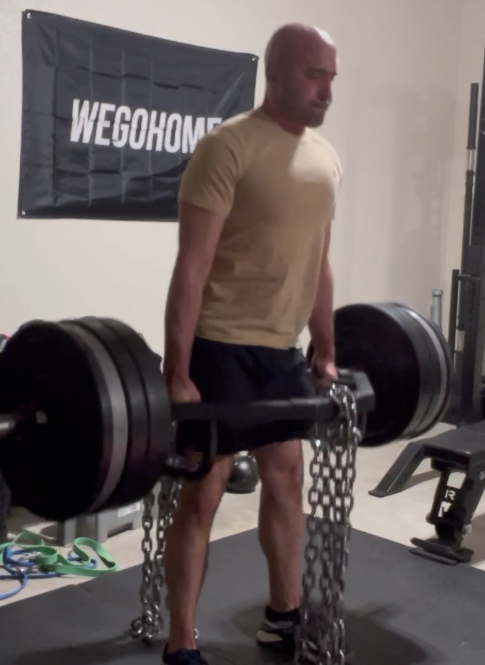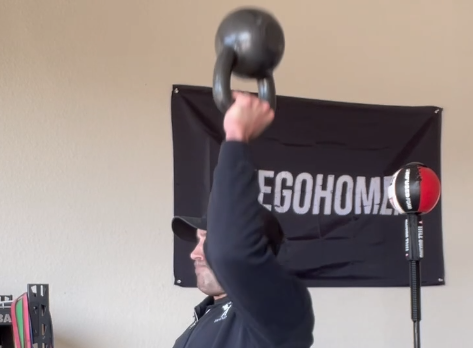Why I changed my mind on the use of bands and chains With Strength and Conditioning for first responders.
Why this matters?
Although often thought of as an advanced training tool, accommodating resistance can be useful for first responders and tactical populations of all levels. This method is most often incorporated with the use of bands and chains attached to barbells.
Chains/Bands allow one to use less absolute weight on the bar, and obviously with these implements attached in the traditional manner the resistance is lighter in the beginning of the lift and heavier at end range of motion. This loading pattern also encourages the trainee to accelerate the load through the entire range of motion as the resistance increases.
For aging tactical populations with wear and tear, this method can be excellent to provide training blocks with less impact on the body but still provide a powerful training effect.
Real World Application- When designing strength and conditioning programs for high mileage first responder/tactical populations, using bands/chains in targeted blocks can be an effective training stimulus for less “advanced” groups.
Benefits
Strength and power training for First Responder/Tactical populations is just as important as their conditioning. It doesn’t matter if you can run a fast marathon time if the person you’re trying to arrest can rag doll you on the side of the road. It also doesn’t matter what your bench is if you can’t walk up a flight of stairs without needing an oxygen mask. These are symbiotic endeavors requiring a careful balance of intensity and volume that should be waved over time.
However, as these populations age, inevitably wear and tear now needs to be taken into consideration. This is just a function of getting older. These professions are unique with the stress of the job and typically what should be complemented with rigorous training.
Although chains/bands are often seen as phenomenal tools for training power (which they are), this situation can also call for their use. By using chains/bands we can load the hero with less absolute load on the bar, and as he or she executes the lift the chains or bands will increase the load as he/she approaches the top of the lift. As seen in the video below, one can see how when the links of the chain start to come off the floor in both the trap bar deadlift and neutral grip press, the load increases.
Chains are great for this and relativity inexpensive. However, please take note in the video of the way they’re loaded. The bar should be loaded with a smaller chain with the larger/heavier chain attached to the smaller chain. This would mean in the bottom position of the lift the chain weight should be almost completed on the floor. I strongly recommend not loading the chain on the bar with just one large chain. This almost completely defeats the purpose of using chains for the reasons I have described above as you’re basically just adding more straight weight to the bar. The magic happens when there there is a contrast between the different portions of the lift. Which depending on how much chain you use could be as little as 10-20lbs...or even 40-60lbs or more.
The other benefit for the “Grey Beards” reading is that chains and bands also create a bit of a breaking mechanism at the top of the lift, which can be particularly felt with band tension. This added bit of feedback forces us to remain mentally engaged during the reps and forces our body to use all of the stabilizer muscles we forget to use sometimes. In other words...a teaching tool.
An easy way to think about this is if you’re doing a bench press, and as you finish the lift at the top there can be a moment where we forget to maintain our technique and keep ourselves braced. The top of the lift is where we’re the strongest, and this is often where you see people rest between reps. This is sometimes where we lose our groove and problems happen down the road. Add some bands or chains to the bar and I am telling you, it is much harder to take a sloppy bar path or forget to keep your abs/lats engaged at the top of the lift.
Conclusion
Both bands and chains are phenomenal tools for the reasons I described above, both for advanced and intermediate first responders/tactical populations. These are tools that just need to be used appropriately. Don’t use them all the time but in targeted blocks it can be a much needed change for the trainee. There are also other ways to use them for oscillatory effects, which we can get into another time.
One note of caution- heavy band tension is different than using chains. Bands actually propel you towards the ground and can be much harder on the nervous system. A very powerful training tool, but should be used a bit more sparingly than chain work.
Any questions, please reach out!



